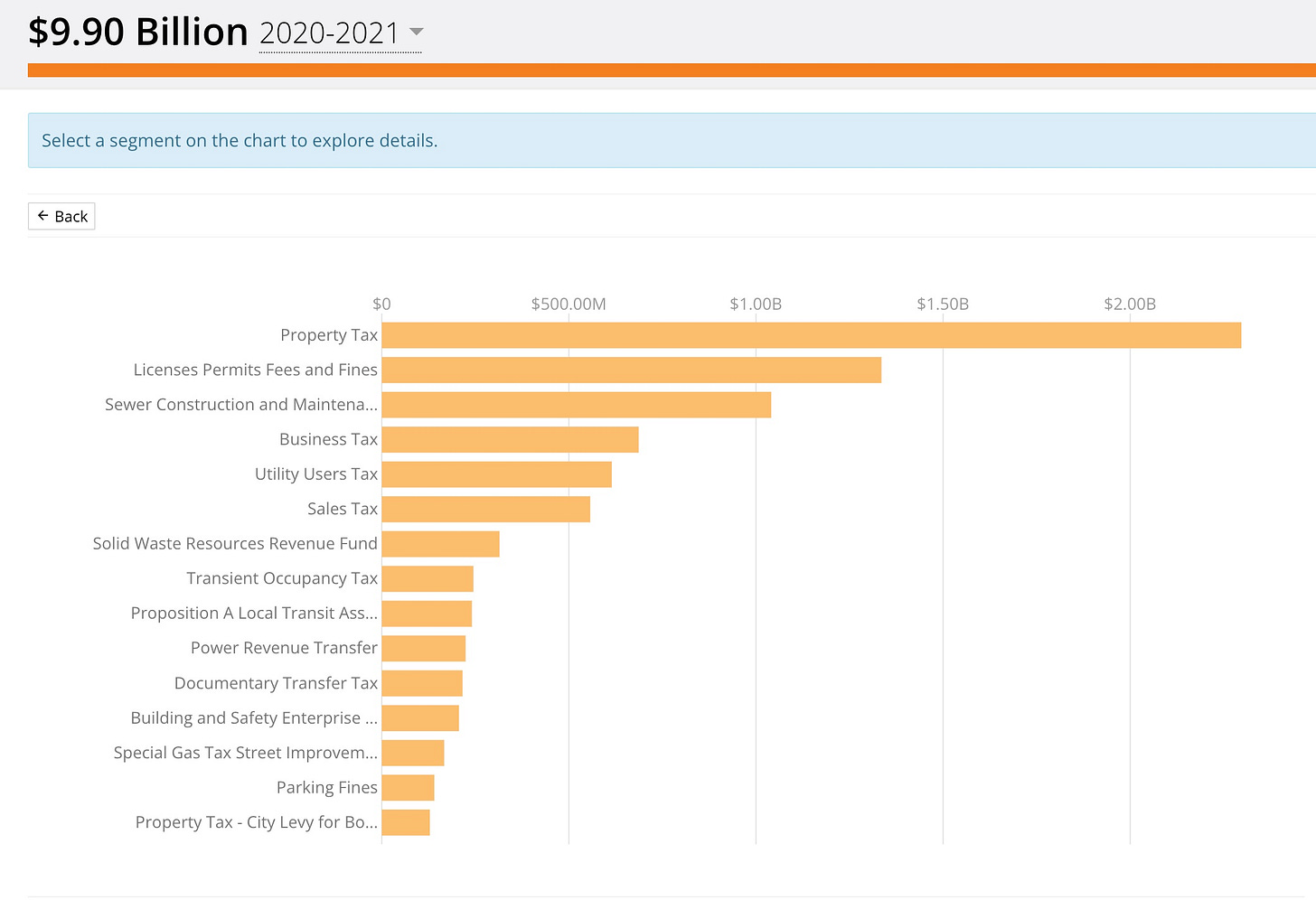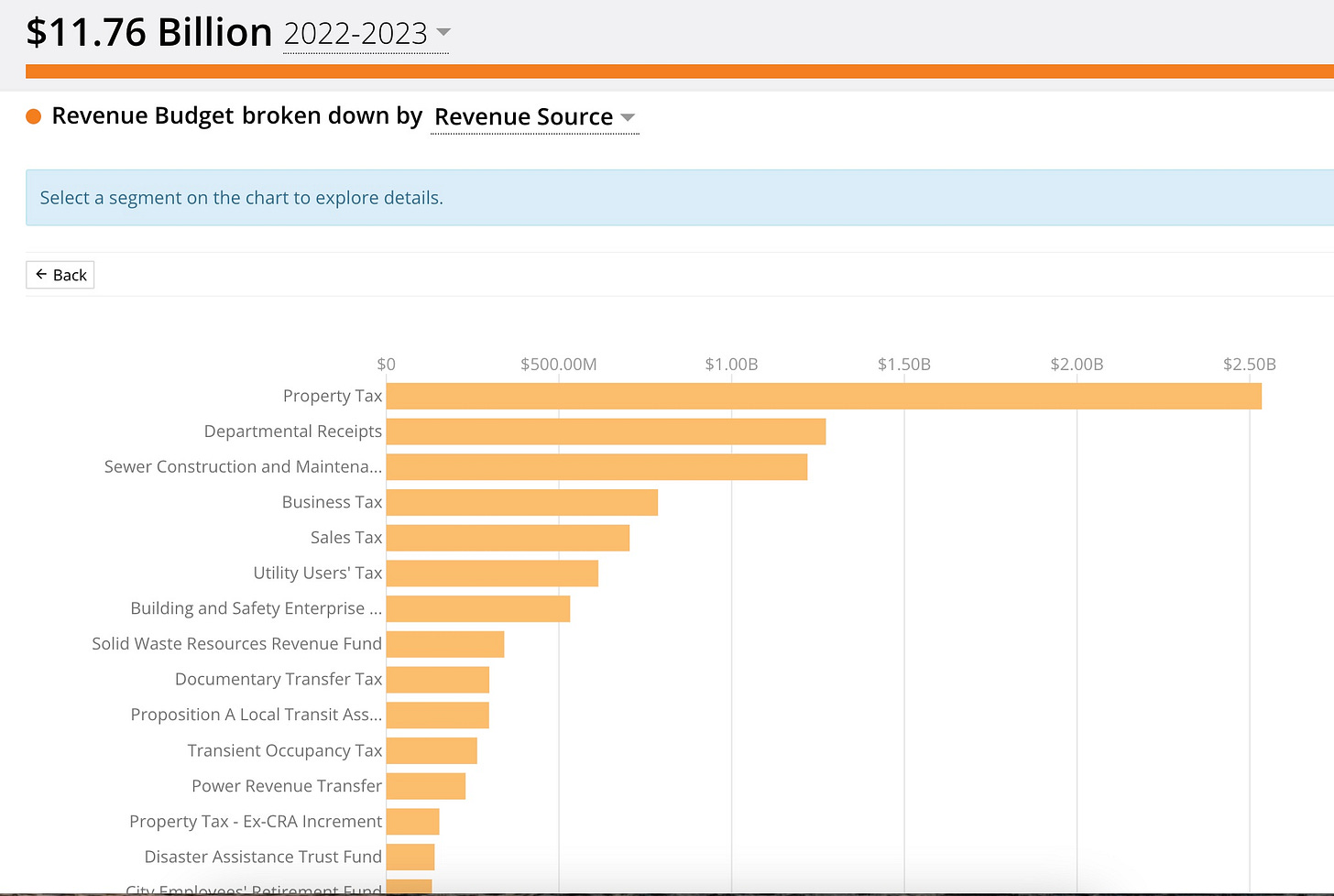LA...A City of Licenses...Permits... Fines...Fees
Something to pay attention to as the City of Los Angeles struggles with its finances.
Los Angeles has seen an overall increase in revenue from licenses, permits, and fines since 2000, though this growth hasn't been consistent throughout the entire period.
The trend can be broken down into several phases:
2000-2008: General growth period for these revenue sources
2008-2010: Decline during the Great Recession
2011-2019: Recovery and renewed growth
2020-2021: Significant disruption due to the COVID-19 pandemic
2021-present: Post-pandemic recovery
Key revenue sources in these categories include:
Business taxes and permits
Building permits and inspection fees
Parking citations
Police department permits and fees
Special event permits
Cannabis business fees and taxes (a more recent addition)
The 2020-2021 budget year is below.
These sources of revenue are generally considered regressive forms of taxation for several important reasons:
Fixed cost burden: These charges typically impose the same dollar amount regardless of income level. A $100 parking ticket or $250 business license represents a much larger percentage of income for a low-income person than for someone with higher earnings.
Disproportionate impact: Lower-income residents tend to be more affected by certain fines and fees. For example, parking violations are more common in densely populated areas with limited parking, which often have more lower-income residents.
Compounding penalties: When people cannot afford to pay initial fines, late fees and penalties can accumulate, creating an escalating financial burden that disproportionately affects those with fewer resources.
Limited alternatives: Many low-income residents have fewer options to avoid certain fees. For example, they may not be able to afford housing with included parking, making them more vulnerable to parking violations.
Revenue motivation: Critics argue that cities sometimes use fines and fees to generate revenue rather than for their intended regulatory or public safety purposes, particularly in jurisdictions with limited tax bases.
Several studies and policy analyses have documented this regressive nature. For instance, research has shown that cities sometimes increase fine enforcement during budget shortfalls and that the financial impact of municipal fines and fees falls most heavily on economically disadvantaged communities.
Yet, something interesting happened recently and I can’t tell why. (Though I wrote about this topic more than four years ago.)
Look at the new 2022-2023 budget chart. The second category of revenue had a name change???
Why this is important.
As licenses, permits, fees, and fines continued to outpace the business and sales taxes, the city seemed to be using regressive taxes to compensate for the decline in commerce and investment.
As the charts show, someone seemed to have changed the revenue categories so that the growing revenue in this punitive informal tax category was no longer shown.
Who came up with the "departmental receipts" label? :)
And when will city hall truly think about a real economic development strategy?
If I am off base I would love to be corrected :)





